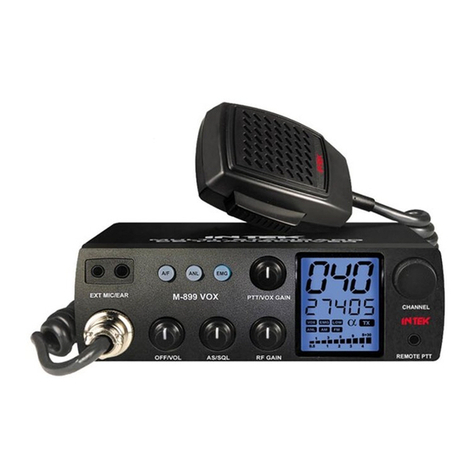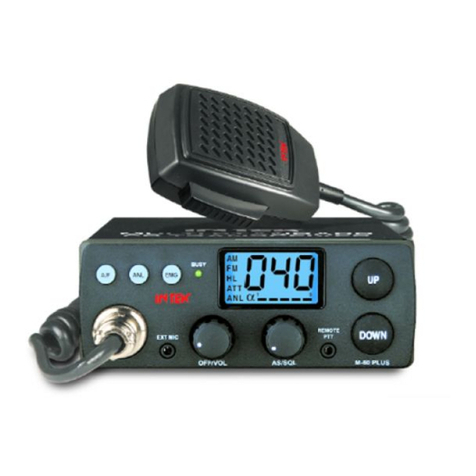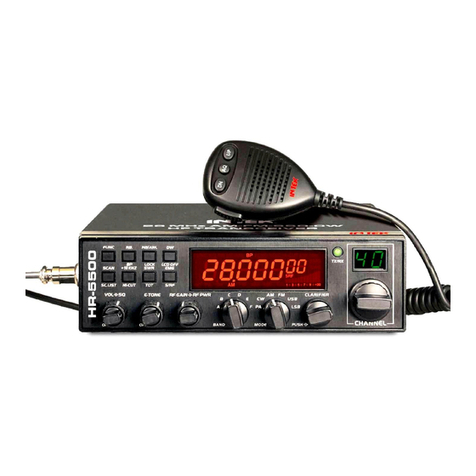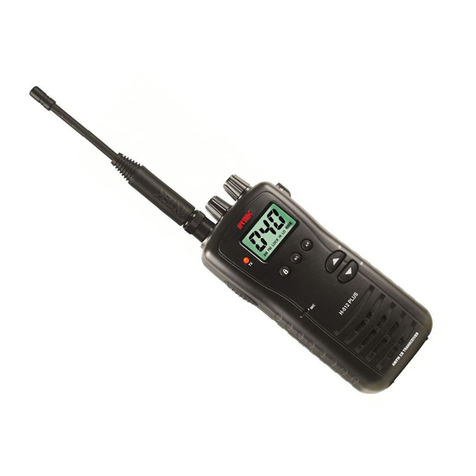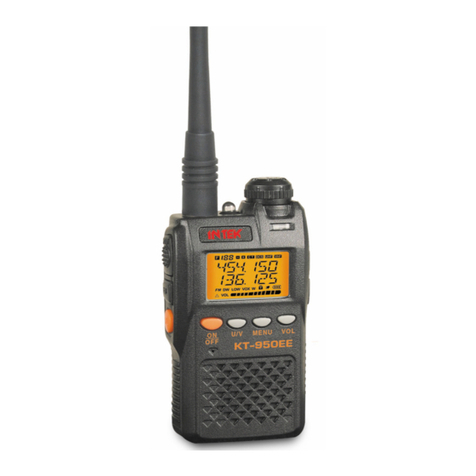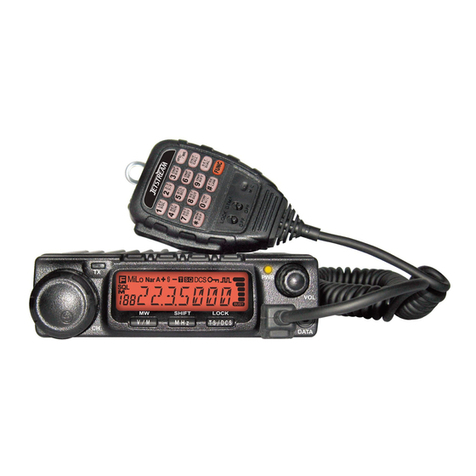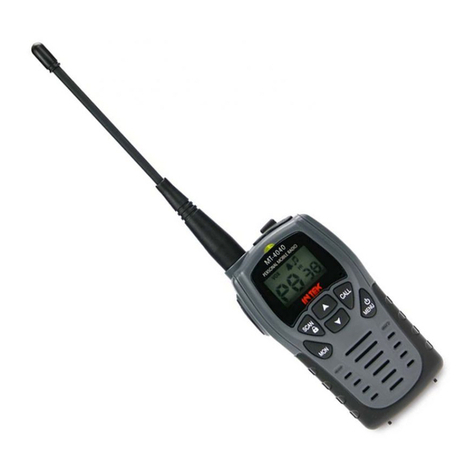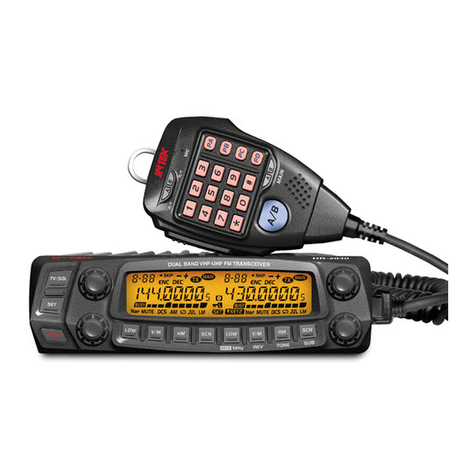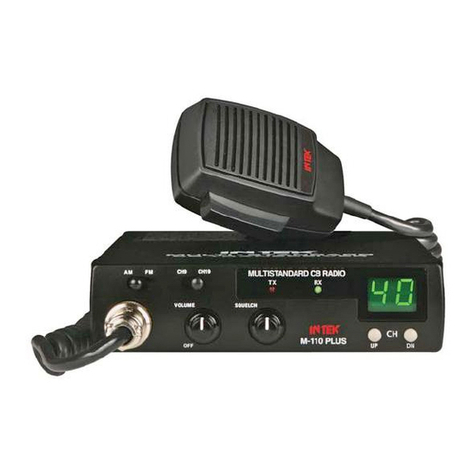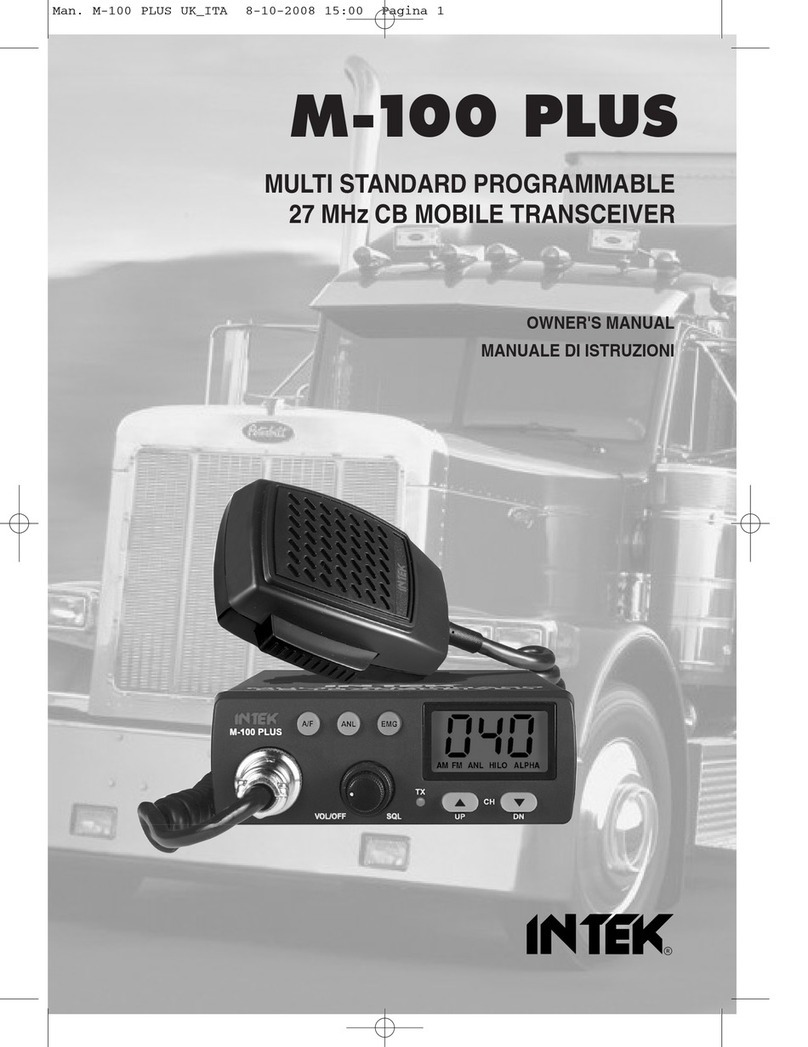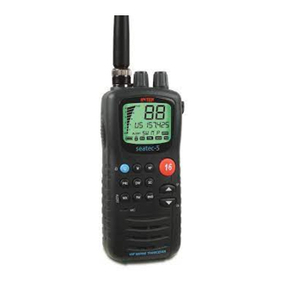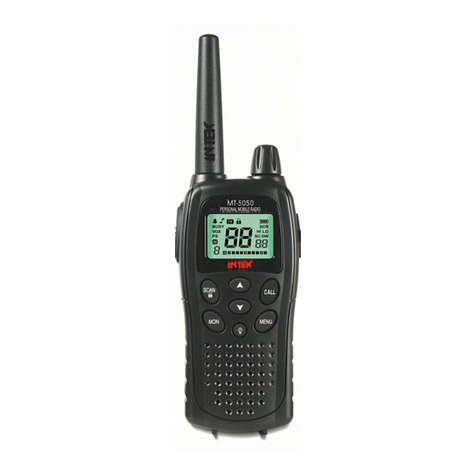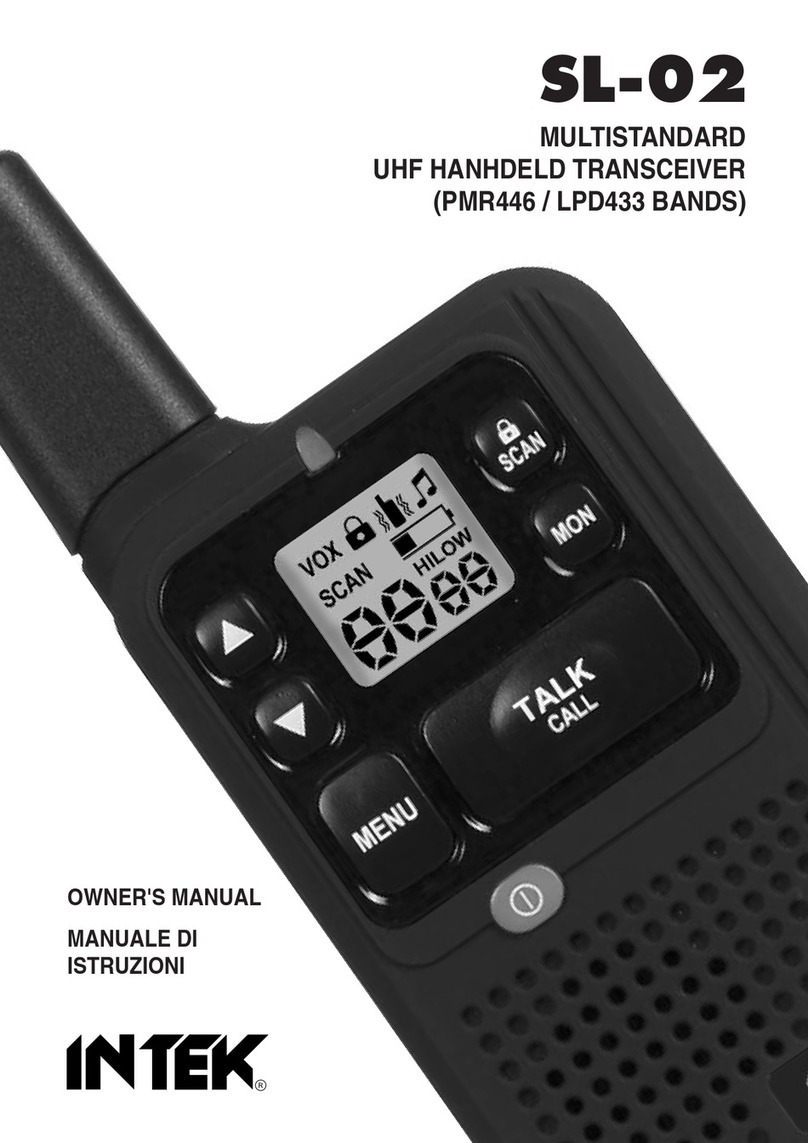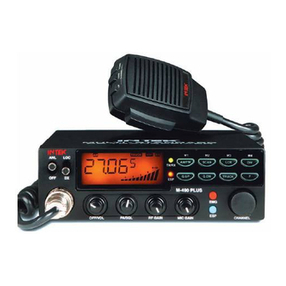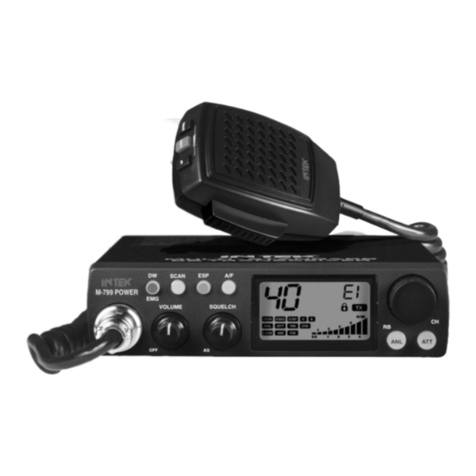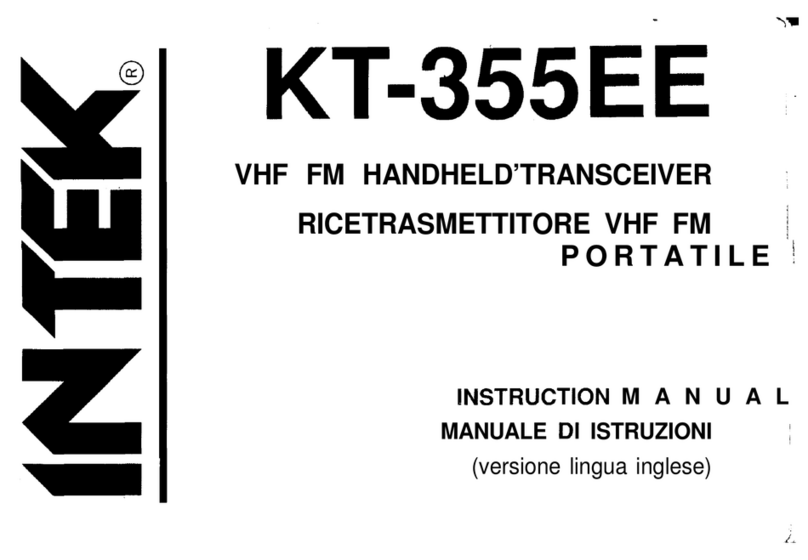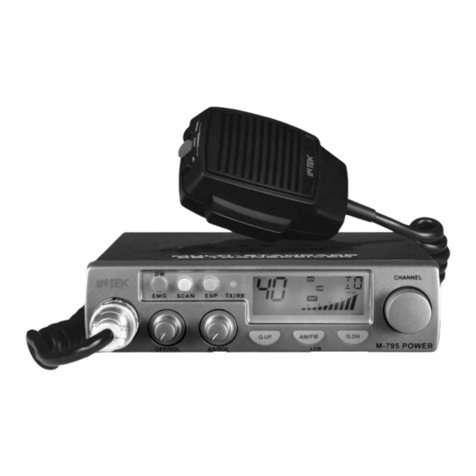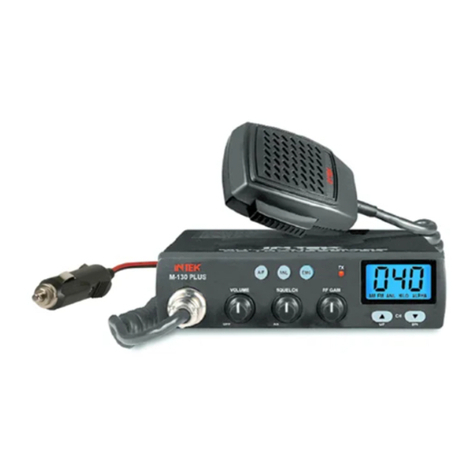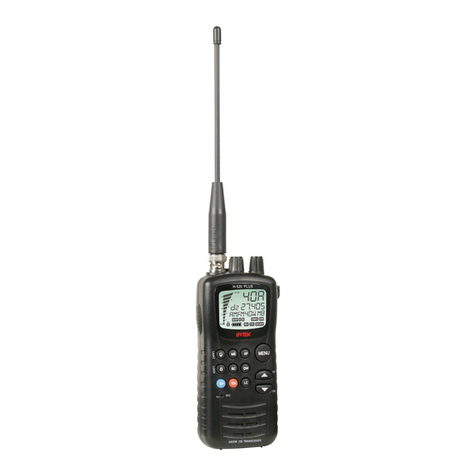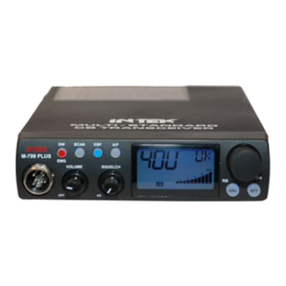Controls and operation
- 5 -
8. LCR and M3 Key
By pressing the LCR (Last Channel Recall) key, radio will automatically select the last used frequency. This key is
also used to program and select the memory frequency M3 (refer to item .11).
9. DW and M4 Key
The DW (Dual Watch) function allows automatic alternate monitoring of two programmable frequencies. Set the first
frequency to be monitored using the CHANNEL selector (13) or the frequency selection keys on the microphone (28,
30). To enable the DW function, press the DW key for about 2 seconds, until the DW icon (I) appears and blinks on
the LCD display. Now set the second frequency to monitor using the CHANNEL selector (13) or the frequency
selection keys on the microphone (28, 30). Press again the DW key for about 2 seconds. The DW function is now
enabled and the LCD display will alternately show the two programmed frequencies. The DW icon (I) will be lighted
on the LCD display. Monitoring stops if a signal is detected on one of the two frequencies, in order to let the user
listen to the incoming signal and will start again when no signal is detected on that frequency. It is possible to transmit
on that frequency, by simply pressing the PTT key (27). If there is no transmission within 5 seconds, monitoring will
re-start. To exit the DW mode, shortly press the PTT button (27). This key is also used to program and select the
memory frequency M4 (refer to item .11).
10. TRUCK / ROGER BEEP Key
The TRUCK key is an exclusive memory function. This key allows quick access to a special programmed memory
frequency (i.e. an emergency frequency, a favorite frequency, etc.). To program the TRUCK memory frequency, set
the desired frequency using the CHANNEL selector (13) or the frequency selection keys on the microphone (28, 30).
Then press and hold the TRUCK key until the TRUCK icon (D) appears on the LCD display. The TRUCK frequency is
now stored in the special TRUCK memory and it can be immediately re-called by simply pressing the TRUCK key
(10). This key is also used to enable the Roger Beep function (refer to item .11).
11. F (Function) Key
The F (Function) key is used to enable various functions.
MEMORY FREQUENCIES (M1-M4) PROGRAMMING
Set the frequency to be programmed and stored in one of the four available memories (M1-M4), using the CHANNEL
selector (13) or the frequency selection keys on the microphone (28, 30). Shortly press the F key and the F icon (C)
will blink on the LCD display. Now press and hold one of the memory keys M1, M2, M3 or M4 for about 2 seconds,
until the memory frequency number will appear on the LCD display (i.e. M1). All the specifications associated to each
frequency will be stored in memory (i.e. AM/FM mode, transmitter power, etc.).
MEMORY FREQUENCIES (M1-M4) SELECTION
Shortly press the F key and the F icon (R) will blink on the LCD display. Now press one of the dual function keys (M1
to M4) to quickly recall and access to one of the programmed memory frequencies. The selected memory frequency
number will appear on the LCD display (P).
ROGER BEEP FUNCTION
To enable or disable the RB (Roger Beep Tone), shortly press the F key (11) and the F icon (R) on the LCD will blink.
Now press the TRUCK key (10). The Rb.on icon (RB enabled) or the Rb.oFF icon (RB disabled) will be showed on
the LCD.
English
